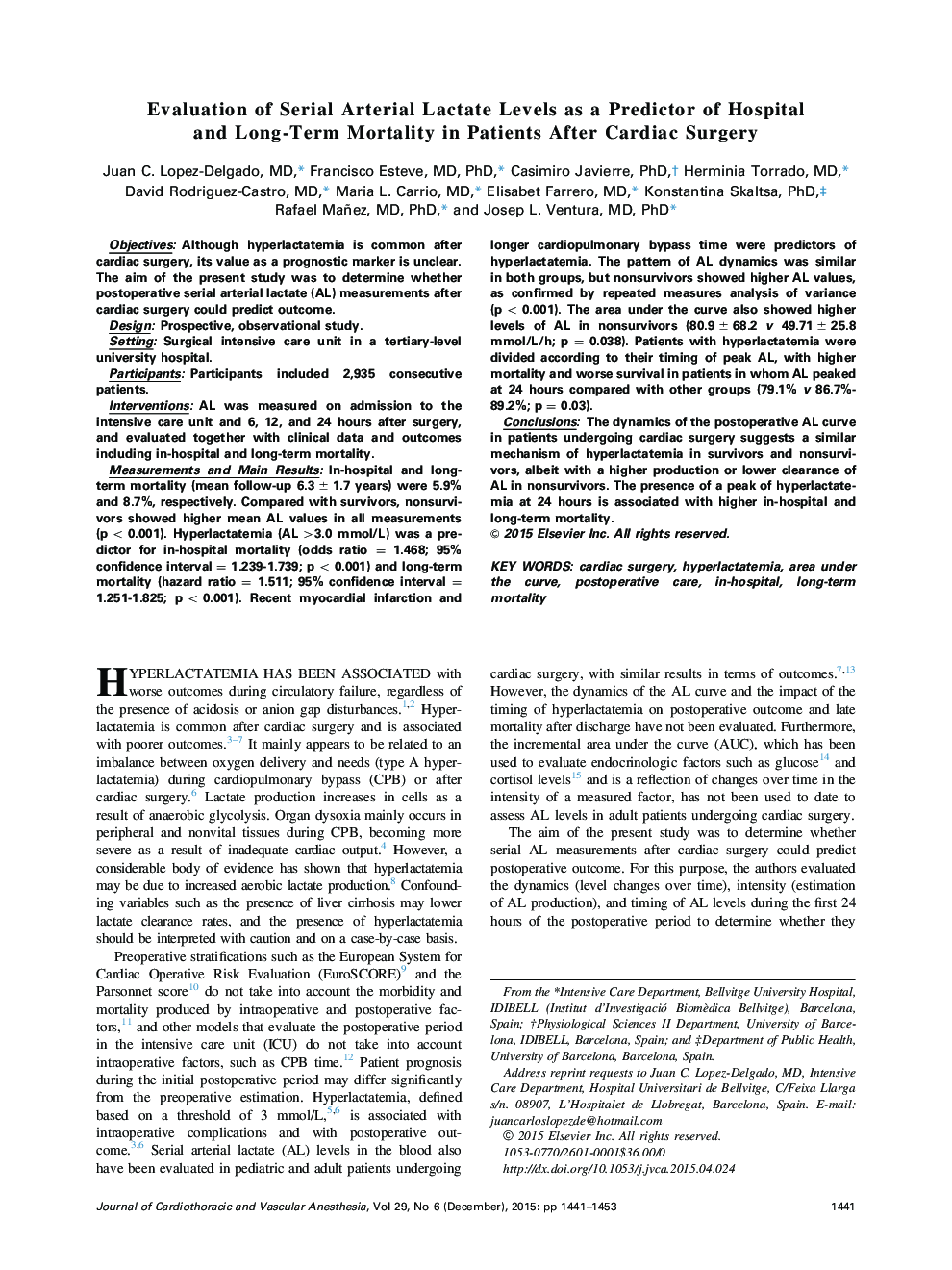| کد مقاله | کد نشریه | سال انتشار | مقاله انگلیسی | نسخه تمام متن |
|---|---|---|---|---|
| 5883729 | 1150139 | 2015 | 13 صفحه PDF | دانلود رایگان |
ObjectivesAlthough hyperlactatemia is common after cardiac surgery, its value as a prognostic marker is unclear. The aim of the present study was to determine whether postoperative serial arterial lactate (AL) measurements after cardiac surgery could predict outcome.DesignProspective, observational study.SettingSurgical intensive care unit in a tertiary-level university hospital.ParticipantsParticipants included 2,935 consecutive patients.InterventionsAL was measured on admission to the intensive care unit and 6, 12, and 24 hours after surgery, and evaluated together with clinical data and outcomes including in-hospital and long-term mortality.Measurements and Main ResultsIn-hospital and long-term mortality (mean follow-up 6.3±1.7 years) were 5.9% and 8.7%, respectively. Compared with survivors, nonsurvivors showed higher mean AL values in all measurements (p<0.001). Hyperlactatemia (AL>3.0 mmol/L) was a predictor for in-hospital mortality (odds ratio = 1.468; 95% confidence interval = 1.239-1.739; p<0.001) and long-term mortality (hazard ratio = 1.511; 95% confidence interval = 1.251-1.825; p<0.001). Recent myocardial infarction and longer cardiopulmonary bypass time were predictors of hyperlactatemia. The pattern of AL dynamics was similar in both groups, but nonsurvivors showed higher AL values, as confirmed by repeated measures analysis of variance (p<0.001). The area under the curve also showed higher levels of AL in nonsurvivors (80.9±68.2 v 49.71±25.8 mmol/L/h; p = 0.038). Patients with hyperlactatemia were divided according to their timing of peak AL, with higher mortality and worse survival in patients in whom AL peaked at 24 hours compared with other groups (79.1% v 86.7%-89.2%; p = 0.03).ConclusionsThe dynamics of the postoperative AL curve in patients undergoing cardiac surgery suggests a similar mechanism of hyperlactatemia in survivors and nonsurvivors, albeit with a higher production or lower clearance of AL in nonsurvivors. The presence of a peak of hyperlactatemia at 24 hours is associated with higher in-hospital and long-term mortality.
Journal: Journal of Cardiothoracic and Vascular Anesthesia - Volume 29, Issue 6, December 2015, Pages 1441-1453
